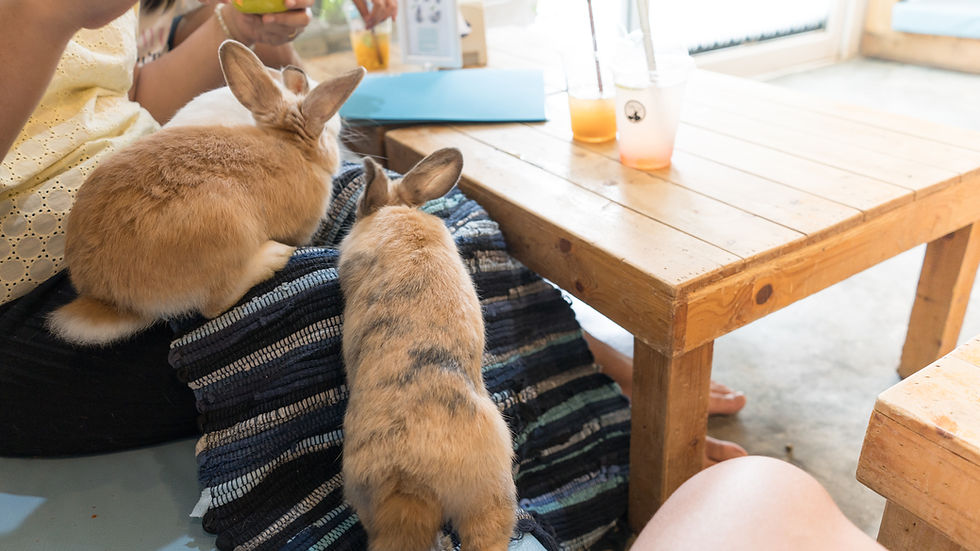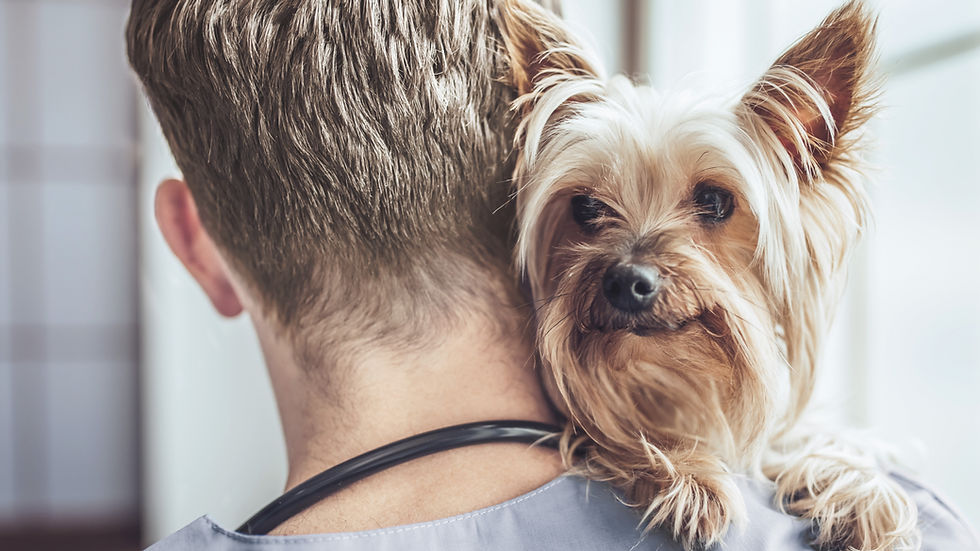Everyday Cleaning Products That Are Harming Your Pets At Home.
- Li''Bit Better

- May 29
- 4 min read
Updated: Aug 4
As a devoted pet parent, ensuring your home is clean and safe for your furry friends is a priority. However, many everyday cleaning products we use to keep our spaces sparkling can pose serious health risks to our pets. In fact, according to the ASPCA Animal Poison Control Center, around 8.3% of pet poison calls are attributed to exposure to household cleaning products. The harmful ingredients in these products can lead to serious health issues through ingestion, inhalation, or even skin contact.
With cleaning product labels often so very confusing, identifying which items may endanger your pets can be challenging. This blog post highlights common cleaning products that can be harmful to your pets and outlines steps to take if you suspect exposure.

Understanding the Risks of Cleaning Products
Household cleaning products, as you know, are often packed with chemicals that can be toxic to pets. Ingredients range from familiar substances like bleach to more potent industrial-grade cleaners loaded with strong solvents. Understanding these risks is essential for preventing potential accidents.
Pets are naturally curious beings. They may lick surfaces cleaned with these products or even chew on cleaning cloths or bottles. This can result in poisoning, gastroenteritis, or respiratory issues, depending on how much they’ve been exposed to and the type of product.
Common Cleaning Products and Their Risks
Common clinical signs of cleaning product toxicity in pets when ingested include:
Drooling or pawing at the mouth
Vomiting
Not eating
Diarrhea
Abdominal pain
Lethargy
Disorientation
Seizures
Coma
Common clinical signs of cleaning product toxicity in pets when inhaled include:
Sneezing
Coughing
Watery eyes
Trouble breathing
Increased rate of breathing
Open-mouth breathing (in cats)
Bluish-colored gums
Common clinical signs of cleaning product toxicity in pets when contact with the skin occurs:
Redness and irritation
Sores or blisters
Rash
Chemical burns

1. Bleach-based Cleaners
Bleach is a common cleaning agent that many people trust, but it can be lethal to pets. Just a small amount can lead to severe gastrointestinal issues, respiratory distress, skin irritation, and eye problems. For example, popular bleach-based products can pose major threats if ingested or inhaled. It's estimated that ingestion can lead to symptoms in about 20% of cases of chemical exposure.
Bleach is more likely to have a 3%–6% concentration. The toxic ingredient most commonly appears on product labels as sodium hypochlorite and is often used in multipurpose, bathroom and tile cleaners, disinfectants, and drain cleaners.
2. Multi-purpose Cleaners
Multi-purpose cleaners are appealing because of their versatility, but some popular brands contain 'fragrances' and surfactants that can irritate pets’ respiratory systems and skin. For instance, exposure may cause allergic reactions, vomiting, and lethargy. Studies indicate that around 15% of pet owners also report adverse reactions in their pets after using these products.
3. Dishwashing Liquids
Dishwashing liquids can contain phosphates and other harmful ingredients. If ingested, pets may experience drooling, diarrhea, or abdominal pain. Studies show that about 10% of pets can have moderate to severe reactions when they ingest contact with these products.
4. Air Fresheners and Scented Candles
While a nice scent can enhance any home, air fresheners and scented candles may be harmful to our pets. Popular commercial brands can release harmful VOCs (volatile organic compounds) that may lead to respiratory issues. Additionally, if pets chew on parts of candles, they risk gastrointestinal blockages. About 30% of pet owners have reported issues after using scented products, making it a significant concern.
5. Toilet Bowl Cleaners
Toilet bowl cleaners are often very corrosive and should be handled with care as they contain harsh chemicals that can cause severe burns to a pet's mouth, throat, and stomach. The vibrant colors and unique scents may attract curious pets, increasing their risk of exposure.
6. Laundry Detergents
Popular supermarket brands may keep your clothes fresh and your wallet slightly fatter, but their concentrated formulas can be toxic to pets. Symptoms of ingestion can include vomiting and even seizures in severe cases. Surprisingly, about 5% of all pet toxicity cases recorded are linked to laundry detergents, underscoring the importance of caution in this area.
Common Toxic Ingredients in Cleaners
Here are some common toxic ingredients found in many popular brand-name cleaners:
Ammonia: Most commonly appears on the product label as ammonium hydroxide, which is ammonia combined with water. It is found in window cleaner, floor wax/polish, drain cleaner, bathroom cleaners, multi-surface sprays, carpet cleaners, and pet stain/odour removal products.
Formaldehyde: This can appear on the product label under many names, including formalin, formic aldehyde, methanal, methylene, and quaternium-15. It is often found in bathroom cleaners and laundry detergents.
Phenol: May appear on a product label under many names, including butylated hydroxytoluene, benzenol, carbolic acid, phenolic acid, Bakelite, and alkylphenols. This is usually found in soaps, disinfectants, and laundry detergents.

What to Do If Your Pet Is Exposed
If you believe your pet has been exposed to a dangerous cleaning product, act quickly and calmly. Here are some critical steps to follow:
Assess the Situation: Identify which product caused the exposure and how much your pet encountered. This information will be vital when contacting a veterinarian or poison control.
Contact a Vet or Poison Control: Reach out to your veterinarian or the Animal Poison Control Center at 1300 869 738 for guidance. They will need details about the product and your pet’s symptoms to assess the risk.
Do Not Induce Vomiting Unless Instructed: Avoid inducing vomiting without professional advice as it may worsen the situation.
Rinse Your Pet: If any product residue is on their skin or fur, rinse them thoroughly with lukewarm water.
Keep a Record: Maintain a list of all cleaning products that could be harmful to your pets for future reference. This can help you make safer choices when cleaning.
Keeping Your Home Safe for Pets
Ensuring your living space is clean should not jeopardize your pet's wellbeing. Being aware of the common cleaning products that might endanger your furry companions allows you to make informed choices about what’s safe in your home. Always scrutinize labels, consider pet-friendly cleaning options, and act promptly if an accident occurs.
By taking simple precautions and remaining vigilant about the products you choose, your home can be a safe haven for your whole family!
So the next time you stock up on cleaning supplies (ahem), take a Lil'Extra care and remember that safety for your beloved fur babies is just as (more) important as cleanliness!





Comments